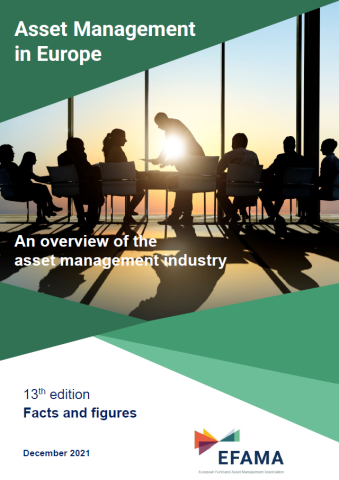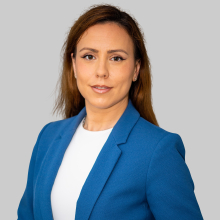This is our 13th edition of the Asset Management in Europe report, which provides an in-depth analysis of recent trends in the European asset management industry, focussing on where investment funds and discretionary mandates are managed in Europe.
This year’s report features three innovations. First, it provides details concerning the amounts of the assets managed in ESG funds. Secondly, it includes concrete examples of how asset managers promote sustainable business practices and incorporate ESG factors in their investment processes. Finally, it contains an analysis of the impact of digitalisation on asset management.
Key findings include:
- Assets under management (AuM) – Total assets under management in Europe reached EUR 28.4 trillion at the end of 2020. Despite the sharp market correction in March 2020, AuM increased by 5.2% in 2020 following the strong rebound towards the end of the year. AuM continued to rise in 2021 and reached an estimated EUR 31.3 trillion at the end of September.
- Investment funds and discretionary mandates – Investment fund assets represented EUR 15,371 billion or 54% of total AuM at the end of 2020. The share of discretionary mandate assets in total AuM stood at 46% and amounted to EUR 13,052 billion. The share of investment funds in total AuM has steadily risen over the last decade.
- AuM across countries – Asset management in Europe is concentrated in six countries where almost 85% of the asset management activity takes place. The United Kingdom is the largest European asset management market, followed by France, Germany, Switzerland, the Netherlands and Italy.
- Sustainable investing – Asset managers have become key contributors to the transition to a sustainable economy by incorporating ESG factors in their investment processes and engaging in more effective and assertive stewardship activities. By the end of Q1 2021, asset managers in Europe applied an ESG investment approach to circa EUR 11 trillion of assets, of which about EUR 6 trillion (or 55%) are managed in investment funds, and EUR 5 trillion in discretionary mandates.
- ESG funds – The introduction of the Sustainable Finance Disclosure Regulation (SFDR) in March 2021 led to the emergence of two distinct categories of funds: so-called Article 8 funds, with sustainability characteristics, and Article 9 funds, with sustainability objectives. At end Q1 2021, French asset managers were leaders in the management of SFDR Article 8 and Article 9 funds.
- Financing the European economy – The outstanding amount of debt and listed equity issued by European residents and held by European asset managers stood at EUR 6,965 billion and EUR 3,414 billion, respectively, at the end of 2020. These amounts represented 26% of the debt securities and 27% of the listed shares issued by European residents.
- Industry clients – At the end of 2020, retail investors formed the largest category of clients of the industry, with a market share of 28%, ahead of pension funds (26%), insurance companies (23%) and other institutional clients (21%). The share of retail clients in total AuM increased slightly in 2020 as European households regained an appetite for capital market instruments. Another recent trend is the steadily increasing share of other institutional clients, such as foundations, charities, holding companies or large corporations.
- Domestic and foreign clients – Domestic clients are by far the biggest clients of the European asset management industry. Yet, the importance of foreign clients has been steadily growing in recent years, rising from 26% in 2017 to 31% at the end of 2020. This development is in line with one of the key goals of the EU’s Capital Markets Union (CMU), namely the further integration of national capital markets into a genuine single market.
- Asset allocation – At the end of 2020, bond assets accounted for 40% of investment portfolios managed by asset managers in Europe, compared to 31% for equity assets and 7% for money market and cash equivalents. The remainder of the portfolio (23%) was made up of other assets, such as infrastructure, hedge funds, structured products, and private equity.
































